
Earlier this year I was contacted by Sarah Hume, a student at Denison University, who was taking a course in Narrative Journalism. She was considering drawing a journalistic comic about the Newark Earthworks for a class project and wanted to interview me to get some background information. It turned out that we had already met. She had been part of a tour of the earthworks that I gave for a class she had taken earlier in her academic career. Anyway, we had a great conversation over Zoom, of course, and I was impressed by her passion and her commitment to getting the story right.
She contacted me at the end of the Fall semester to share her finished comic with me. I don’t know what grade she got from her professor, but I liked it so much I asked her if we could share her project here on the Ohio Archaeology Blog. Thankfully, she agreed.
I hope you all enjoy her comic, but I also hope it reaches an audience that may not find our ordinary blog posts as appealing as the way Sarah tells the story.
Brad Lepper
Archaeology Curator
“I first visited the Newark Earthworks during my freshman year of college. I was taking a Geoscience class with Dr. Erik Klemetti, and along with learning about the rocky materials used to make the earthworks, we learned about the Hopewell. On a rainy afternoon, we piled into a Denison van and visited the site. Brad Lepper gave us a tour. We heard about the geometry of the space, the possible pilgrimages that took place there, and how the walls were built, until we finally had to stop at the Moundbuilders Country Club fence.
It was my first time hearing about the Earthworks. I grew up in Michigan, but my father lived in Ohio until he went to college. I was surprised that I hadn’t heard about the earthworks earlier. I’ve since discovered that many people share this experience. Tucked away behind buildings and a golf course, the Earthworks are often overlooked now, despite being a central hub for people in 400 A.D.
The Earthworks are beautiful. There’s a hush when you enter the space. You feel centuries of history, known and unknown, moving through the ground underneath you. Its roots reach out to the present day.
I’m now in my third year at Denison University, and most things I do here lead back to the Earthworks. I wrote a nonfiction article about them for a class. When my sister came after freshman year to move me out of my room, I took her to the Earthworks and told her what Brad Lepper had told me. As a fourth date, my partner and I drove to the Earthworks and walked around, reading about the history. That summer, I volunteered to work at an archeological field site in North Carolina to learn more about the process of it. My mind always wandered back to the Earthworks.
A story surrounds this land. I wanted to speak with people who knew more: those who study the earthworks, those who advocate for them, those who had ancestors who came from Ohio, and those who fight daily to ensure that this land is respected and can be used for its sacred purposes. To begin, I reached out to the first person I remembered from my tour. Brad Lepper graciously Agreed to meet with me over Zoom. He spoke to me about his experience with the Earthworks and the court case. I watched videos of Marti Chaatsmith speaking about tribal stewardship and Articles in which John Low speaks about the legacy of the earthworks. When she heard that I was making a comic journalism piece, Marti kindly sent me comics about the Repatriation Act that her friend Dr. Sonya Atalay made, which inspired me to focus on a narrative story in my own project.
I stumbled on the video of Chief Glenna Wallace on the Newark Earthworks Center’s blog. I cried when I heard her words. The images of rain and the golf course were powerful. I wanted to use her story– condensed to the first time she visited the Earthworks– as the narrative structure of the comic. Many other stories were soon layered over top. There never seemed to be enough time or space as I continued working on this comic. I kept hearing stories that I wanted to add. I hope to do just that by developing this comic further.
I can’t thank Marti Chaatsmith, Brad Lepper, John Low, and Glenna Wallace enough for sharing their stories. This is something I could continue learning about forever. Before beginning this project, I didn’t know that eminent domain could be used to protect significant archeological sites. I learned that Chief Glenna Wallace is the first female chief of the Eastern Shawnee, and about tribal stewardship from Marti Chaatsmith’s online lectures. It has been an honor to learn more about the Earthworks through this project.
Here’s to all the people who continue to fight the good fight.”
Sarah Hume
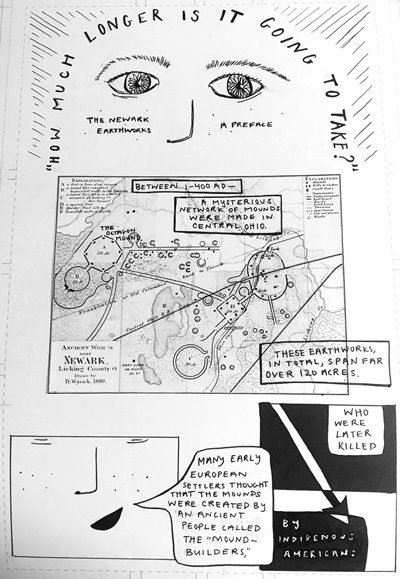
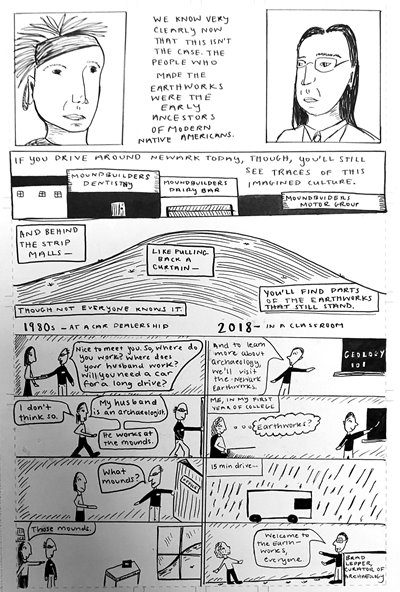
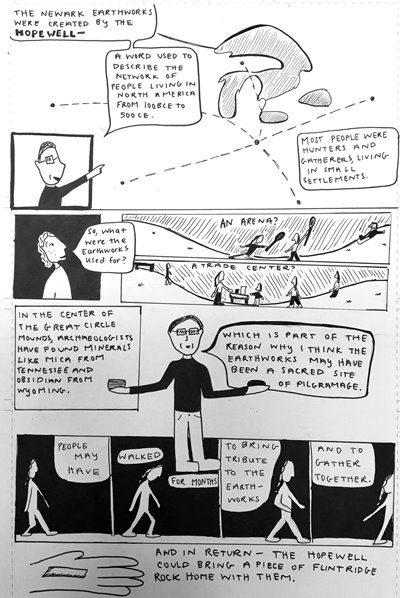

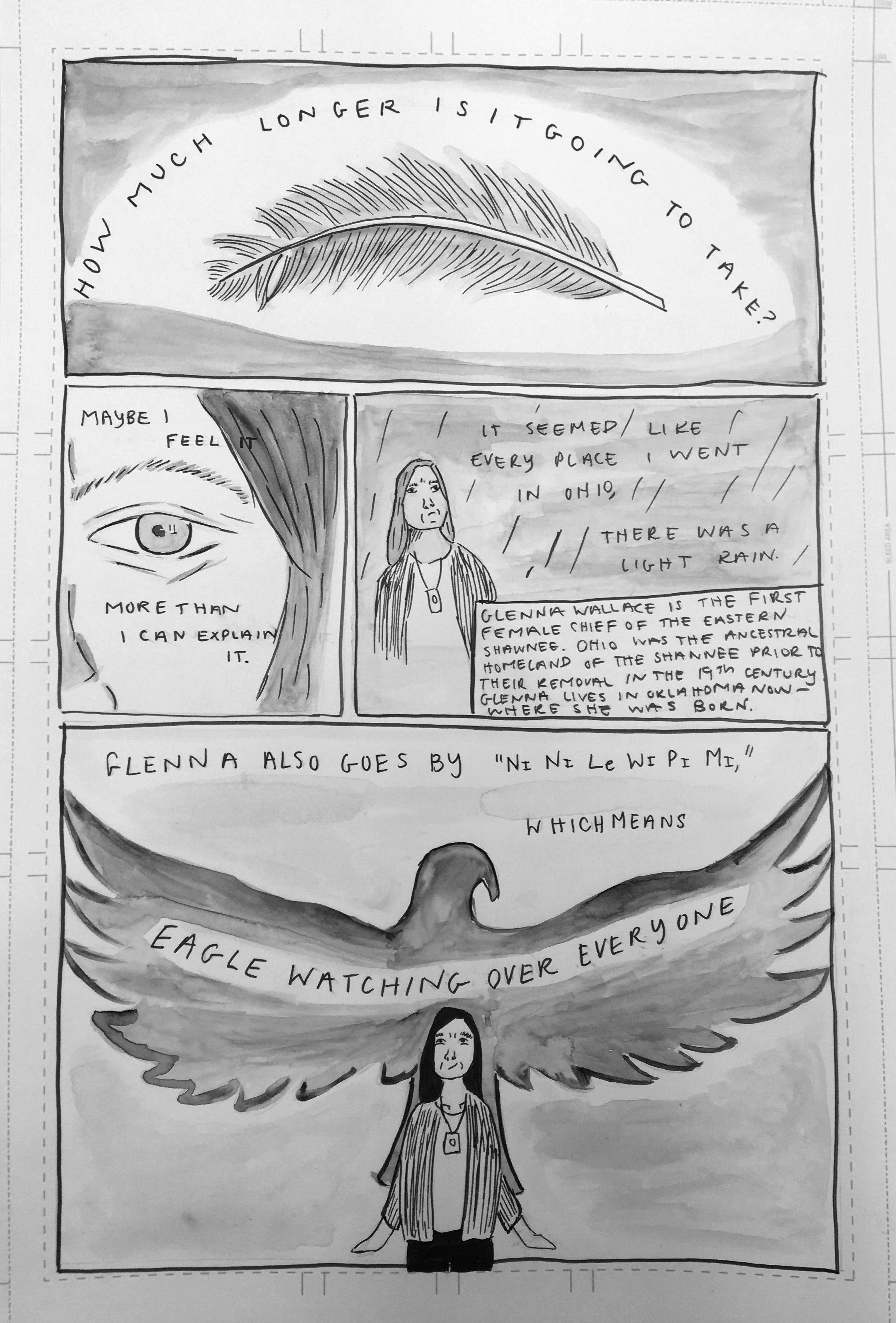
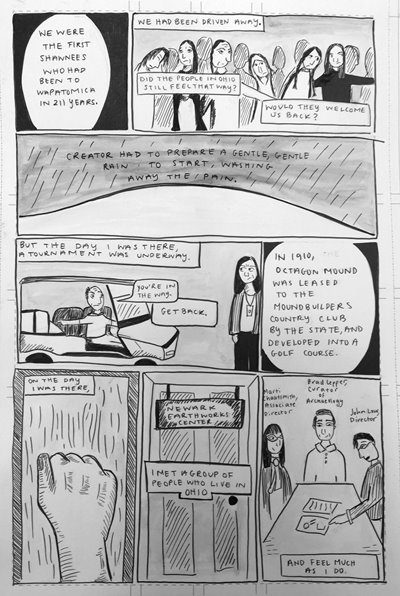
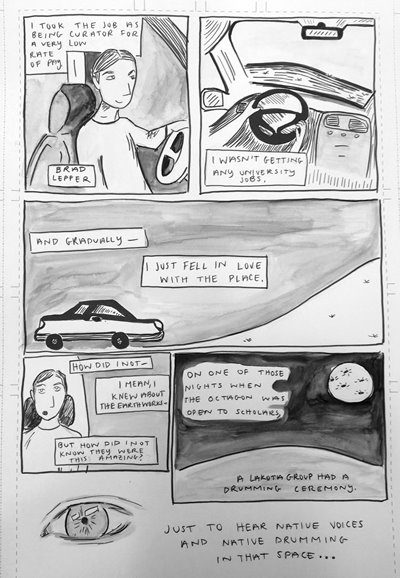
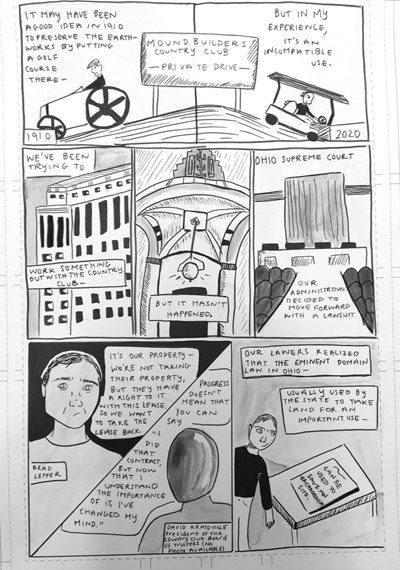
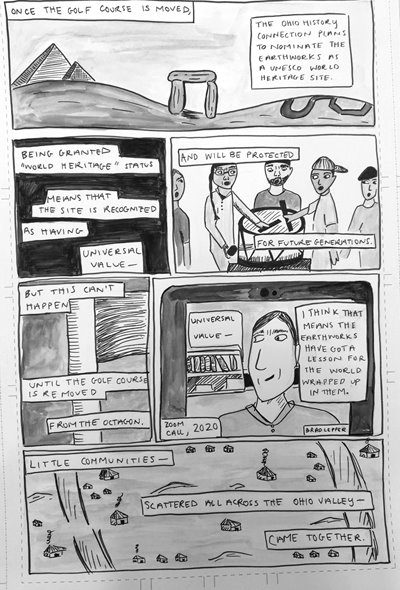
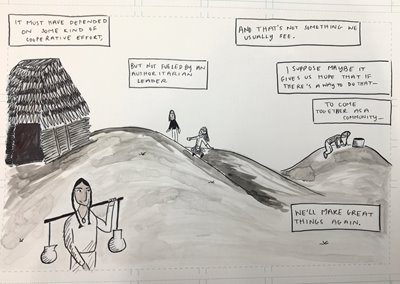

Sarah Hume image credit: Denison University Narrative Journalism https://denison.edu/academics/narrative-journalism/feature/136336